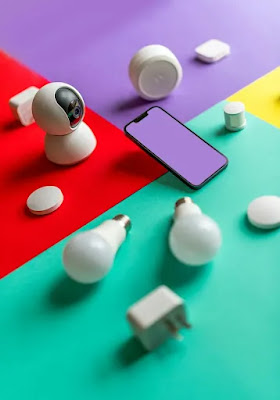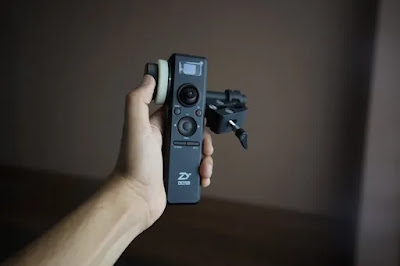Understanding the Internet of Things - IoT – Asrar Qureshi’s Blog Post #966
Understanding the Internet of Things - IoT – Asrar Qureshi’s Blog Post #966
Dear Colleagues! This is Asrar Qureshi’s Blog Post 966 for Pharma Veterans. Pharma Veterans Blogs are published by Asrar Qureshi on its dedicated site https://pharmaveterans.com. Please email to aq.pharmaveterans@gmail.com for publishing your contributions here.
 |
| Credit: Anna Shvets |
 |
| Credit: Ivan Bertolazzi |
 |
| Credit: Jakub Zerdzicki |
 |
| Credit: Yücel Özel |
Help for this article has been taken from a McKinsey article, link at the end.
Preamble
Pharma Industry is among the slowest in Pakistan to take up new technologies. Even top grossing companies are doing lot of manual operations in all departments, particularly production. This will have to change if the industry is to become more competitive. Competition today is based on efficiency, not just the amount of production done. Being an insider, I understand that there are lots of wastages of all kinds in the operations of any pharma company, which is an entire subject to be taken up separately.
Current Level of Digitization
Most medium to large size companies have installed some kind of ERP – Enterprise Resource Planning Software. As the name indicates, an ERP is supposed to cover the entire organization. However, practically, all modules are either not purchased, or not activated depending upon the whim of the functional heads. SAP – Business One has been installed as a status symbol in several companies, but its full utility is neither explored nor exploited.
Reasons for Aversion to Digitization
The biggest reason is that no enterprise wants to record actual data because it would hamper the unauthorized siphoning out of money and may also be an impediment to universal tax avoidance.
The second reason is that most functional heads still come from the previous generation and are not well-versed or comfortable with technology. Even their junior staff is not digitally educated because even today, Pakistani universities are churning out graduates and postgraduates without exposure to even basic computing applications. Students may know MS Word the most, and/or a little bit of MS PowerPoint. Some may be able to run a few specific statistical applications, but nothing beyond that.
What is the Internet of Things - IoT
With this background, we go on to understand IoT because it has gotten into our lives even without our realizing it.
The Internet of Things – IoT refers to physical objects embedded with sensors that communicate with computers. The IoT enables the physical world to be digitally monitored or controlled.
IoT uses a variety of technologies to connect the digital and physical worlds. Physical objects can be embedded with sensors and actuators. Sensors monitor things like temperature and motion, or any change in the environment. Actuators receive signals from sensors and react to the reported changes. Sensors and actuators may communicate with computing systems via wired, for example Ethernet, or wireless, for example WIFI or cellular networks.
In addition to constant connectivity that IoT enables, it also opens up new opportunities for companies to increase operational efficiency, and innovate products and services, when it is combined with data and analytics.
Applications of IoT
Presently, IoT devices are being used in the following eight fields.
1. Human bodies – devices can be attached to or implanted in the human body; these include wearables or ingestible devices that monitor or maintain health and wellness.
2. Homes – Devices such as home voice assistants, automated vacuum cleaners, automated curtains/blinds, lights, security systems etc.
3. Retail – Devices can be installed in stores, banks, restaurants etc. to facilitate self-checkout, in-store offers, and help optimize inventory.
4. Offices – IoT applications in offices could help in energy management and security for buildings.
5. Production – In customized settings of production, IoT applications may be used in predictive maintenance or health and safety efforts. In manufacturing plants, hospitals, or farms, IoT applications are usually aimed at increasing operating efficiencies or optimizing equipment use.
6. Vehicles – IoT can help with condition-based maintenance, usage-based design, multiple functions in vehicle running, GPS based routing, and traffic data analytics.
7. Cities – IoT applications can be used for adaptive traffic control, smart meters, environmental monitoring, or management resources.
8. Outside – In urban environments or other outdoor settings, such as railroad tracks, autonomous vehicles, flight navigation, IoT applications could involve real time routing, connected navigation, or shipment tracking.
There are numerous other areas where IoT applications are presently being used.
Economic Potential of IoT
The potential value of IoT is large and growing. By 2030, as per estimates, it could amount up to $ 12.5 trillion globally. Another way of looking at IoT’s value is to explore use-case clusters, or similar uses adapted to different settings. The following break up is estimated.
• Optimizing operations, making day to day management of assets and people more efficient – 41 percent
• Healthcare applications – 15 percent
• Human productivity – 15 percent
• Condition-based maintenance – 12 percent
Other clusters include sales enablement, energy management, autonomous vehicles, and safety/security.
Key Factors
A seamless IoT experience meets these six requirements: hyperconnected, integrated, secure and trusted, intelligent, mobile, and hyper-personalized.
The biggest threat to IoT is cybersecurity.
Where are We?
Digitization is a separate subject from IoT. However, when the two are combined, they can offer the most benefits.
As mentioned earlier, we are from nowhere to struggling in digitization. As the things appear, significant improvement is not expected in the near future. We have not even started with the IoT in business settings, and therefore, we cannot expect to reap economic benefits for any of these. Having worked in several SAP enterprise settings, I can vouch that the whole thing, as it is being used presently, is a waste of money, time, and energy. The data is rarely used for decision making, and the effort is to continue old, manual practices, on a computer. Obviously, it is not creating any value. IoT is restricted to biometric attendance, and a few IP-based surveillance cameras; most cameras are still attached to a recording device and are not internet enabled.
Generally, we cannot call ourselves internet-beneficiaries just because a large number of people can use WhatsApp, or Instagram, and many people are making TikTok videos, or making Facebook reels.
At the government level, there is no consistent, broad-based policy to bring the nation into the ambit of technology. Couple of highly qualified federal ministers took few initiatives but were not allowed to continue till they could create an impact. The rest of the governing lot is digitally (many academically also) illiterate and take pride in it. Relief is not in sight.
Concluded.
Disclaimers: Pictures in these blogs are taken from free resources at Pexels, Pixabay, Unsplash, and Google. Credit is given where available. If a copyright claim is lodged, we shall remove the picture with appropriate regrets.
For most blogs, I research from several sources which are open to public. Their links are mentioned under references. There is no intention to infringe upon anyone’s copyrights. If, however, it happens unintentionally, I offer my sincere regrets.
Reference:
https://www.mckinsey.com/featured-insights/mckinsey-explainers/what-is-the-internet-of-things



Comments
Post a Comment